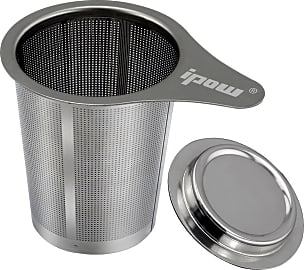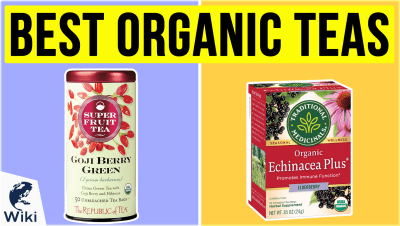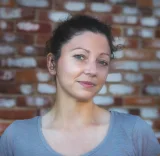The 10 Best Tea Strainers

This wiki has been updated 38 times since it was first published in February of 2016. Tea lovers across the globe can be a bit finicky about their drinks, but you don't have to be an aficionado to appreciate an infuser that produces an excellent cuppa. These tea strainers and steepers help to keep any debris out of your cup, with some allowing loose leaves to expand in hot water and deliver the most flavor. They range in style from eye-catching to elegant. When users buy our independently chosen editorial recommendations, we may earn commissions to help fund the Wiki.
Editor's Notes
February 27, 2019:
Even though making tea can be a highly personal process, we looked for options that would suit various kinds of tea drinkers, from the casual to the connoisseur. At this time, the Finum Brewing Basket and Hario Chacha Kyusu Maru remain top choices that will suit even those on the pickier side, as they blend convenience with excellent straining capacity so you don't have to be afraid to use finer blends. We decided to remove the Elisabeth Nielsen Infusers; ongoing problems with their clasps make them just a bit too frustrating. For those looking for a cute gift, we added the Tilevo Dinosaur Set, which is sure to bring a smile to even grumpier tea drinkers. Both it and the Me.Fan Silicone Bags are appropriate for anyone trying to avoid metal, for whatever reason, although it should be noted that these types generally work better with larger leaves.
A Brief History Of Tea
At one point, someone decided to grab some leaves, boil them, then wait a while and drink whatever juice was left behind.
Tea is weird, if you think about it. At one point, someone decided to grab some leaves, boil them, then wait a while and drink whatever juice was left behind.
You have to be pretty hard up for something to drink to do that.
The actual origins of tea are shrouded in mystery. One legend says that in 2737 B.C.E., a Chinese emperor named Shennong decreed that all his subjects had to boil water before drinking it. While Shennong was boiling his own water, some leaves from a nearby tree were blown into it, and Shennong, being a chill dude, decided to drink the now-brown water anyway — and it was delicious.
Regardless of who discovered it, tea was prized for its medicinal purposes as early as the 10th century B.C.E. It wouldn't start to be consumed for its flavor until the Tang Dynasty in the 7th century C.E. It was soon shared with travelers, enabling it to spread throughout Asia.
Europe wouldn't catch on to the new craze for quite some time. It wouldn't be until the early 17th century C.E. that the Dutch East India Company would bring the first sample to Amsterdam. Due to the difficulty in procuring it, though, consumption was largely relegated to the economic elite.
The British began to sell it at coffee houses not long after, but it wasn't especially popular at first — until King Charles II married the Portuguese princess Catherine of Braganza, who was incredibly fond of the drink. The king quickly developed a taste for it, as well, and so drinking it became expected of all the members of the royal court.
Once it established a foothold, tea became ubiquitous in the United Kingdom. They even took to adding milk and sugar to it, which the Chinese had never attempted.
They even briefly went to war over the stuff. China demanded silver bullion for their leaves, which ended up depleting British stores; this, along with disputes over the opium trade, led to a brief skirmish known as the First Opium War.
Fortunately, the British were soon able to restore their precious tea trade (because you do not want to see them when they don't have their tea), and the drink became emblematic of "British-ness." They brought it over to the colonies, where it also became a valued cultural icon, especially in the south.
Tea remains big business today, and there are seemingly more options available than ever. The American market alone is estimated to be just shy of $7 billion per year, so it looks like it will remain an important part of our lives for the foreseeable future.
Still — fighting wars over it? It's not like it's coffee or anything.
How Brewing Tea Works
While you already know it's delicious, have you ever stopped to wonder just how brewing tea works?
Of course not — it would only slow you down on your way to your next cup.
Well, we have wondered, and we're going to share with you what we've found.
While you already know it's delicious, have you ever stopped to wonder just how brewing tea works?
All teas come from the same plant (called the "tea plant" — let us know if all this jargon is over your head). Different strains come from different parts of the plant, and each one has its own unique variety of chemicals, called "polyphenols." The plant actually makes these to ward off predators, making it one of the biggest backfires of all time.
The chemical composition of these polyphenols begins to change as soon as the leaves are picked. They begin a process called oxidation, which creates new compounds — typically those responsible for the taste and aroma of the associated drink.
Once you add hot water to your leaves, the chemicals are altered even further. The water sucks some of those chemicals out, such as the phenols and that sweet, sweet caffeine. The steeping time and temperature affects exactly how much that chemical composition is changed, with higher temperatures leading to more bitter brews.
If you add milk, this can affect the number of antioxidants released by the leaves. This is because proteins in the milk blend with chemicals in the tea, preventing their release.
So, you might not consider yourself to be a mad scientist, but an amazing amount of chemistry occurs when you brew a pitcher of tea. We're not saying you should go ahead and claim a chemistry degree on your résumé — we're just saying you could.
Tips For Brewing The Perfect Cup
The verdict is in. Recent discoveries have revealed two things: the secret to the perfect cuppa, and the fact that scientists have too much time on their hands.
The first thing you should know is that the longer you brew it, the more caffeine will be in it. As mentioned above, the longer that leaves spend in the water, the more chemicals will be released into it — especially antioxidants.
Tea bags are more convenient, but they will inhibit infusion.
The container you choose for your cup is important, as well. Never use Styrofoam, as it will suck the flavor right out. Stick to traditional cups.
Don't use just any water, either. Filtered water is preferable, as it screens out minerals like calcium that can affect the taste and consistency.
Tea bags are more convenient, but they will inhibit infusion. Also, the tea inside is usually lower-quality, so you're better off using loose teas or leaves.
If you use milk, pour it into the cup before you add the tea. This makes for a more uniform color, which is half the fun. If you like to add honey or sugar, wait until the tea cools a bit before you drop it in.
Of course, there are a billion other rules you could follow, and everyone you meet will swear that their technique is the only way, so experiment a bit to find what works for you.















